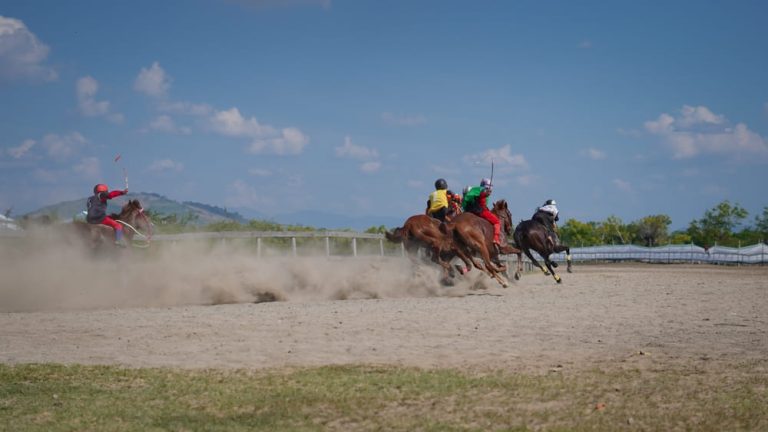Ghode Jatra, also known as the Horse Racing Day, is being celebrated with great enthusiasm in Kathmandu Valley on Saturday. This traditional festival, held in the Nepali month of Chaitra, holds deep historical and cultural significance. It is believed to have originated after the death of a demon named Tundi, who terrorized the people living in what is now Tundikhel. According to legend, after Tundi’s demise, people celebrated by racing horses over his body, symbolizing their triumph over evil.
Symbolic Celebration and Military Display
Ghode Jatra is a vibrant festival that signifies victory over darkness and protection from evil spirits. The Nepali Army plays a crucial role in the celebrations, organizing a grand horse race at Tundikhel in Kathmandu. This event is attended by high-ranking officials, including government leaders, army personnel, and distinguished guests.
Apart from the horse race, the military also showcases acrobatics and equestrian skills, adding excitement to the festival. The fast-paced horse parade demonstrates agility and coordination, making it a thrilling spectacle for the public. Over the years, this tradition has evolved into a major event, drawing thousands of spectators from across the country.
Ekal Ghode Jatra in Lalitpur
While the grand celebration takes place in Kathmandu, a special event called “Ekal Ghode Jatra” (Single Horse Parade) is also observed in Patan, Lalitpur. This tradition is believed to have started during the Malla era and is carried out by the Bhimsen Guthi of Balkumari Jyapu Tol.
Arjun Maharjan, a trustee of the Guthi, stated that this festival was initiated by King Shiva Singh Malla, who is locally known as Simsim King. It is believed that the Ghode Jatra in Lalitpur predates the one in Kathmandu, making it one of the oldest horse-related festivals in Nepal.
Preserving an Age-Old Tradition
According to the Lalitpur Metropolitan City, Ghode Jatra continues to be celebrated to honor and preserve this historic tradition. Every year, trustees and locals work together to ensure the festival’s success. The horses for this event are provided by the Nepal Army’s Cavalry unit.
The Ekal Ghode Jatra begins with a religious ceremony where rituals and prayers are performed. The highlight of the event is the single-horse parade, which moves through the streets of Patan, stopping at sacred sites like the Ganesh and Balkumari temples. The horse circumambulates these temples three times, a symbolic act that is believed to bring blessings and prosperity.
After the completion of the parade, participants gather at the inn house of Bal Kumari to receive Prasad, a sacred offering. This communal gathering reflects the deep-rooted cultural ties among the people of Lalitpur.
A Festival That Unites the Community
Ghode Jatra is more than just a horse racing event; it is a celebration that brings people together. Families, friends, and visitors come to witness the thrilling performances, experience the lively atmosphere, and participate in ritualistic cultural. The festival holds great importance for the Newar community, who have passed down its traditions for generations.
While modernization has changed many aspects of Nepal’s festivals, Ghode Jatra remains a powerful symbol of heritage and pride. It continues to capture the imagination of young and old alike, reinforcing the values of unity, courage, and tradition.
With Kathmandu’s Tundikhel buzzing with excitement and Lalitpur’s historic streets echoing with the sound of hooves, Ghode Jatra once again reminds everyone of the rich cultural heritage that Nepal proudly upholds.


